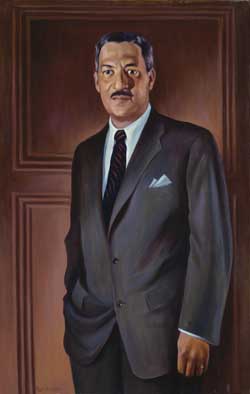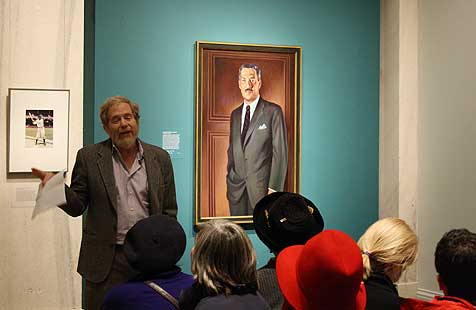Portrait of Thurgood Marshall by Betsy Graves Reyneau

Oil on canvas, 1956 / National Portrait Gallery, Smithsonian Institution;
gift of the Harmon Foundation
Thurgood Marshall played a major role in the 1940s and 1950s as a leader in the struggle to end racial discrimination in the United States. From 1938 to 1961, he served as chief staff lawyer for the NAACP. Marshall devoted much effort to tailoring arguments that led the Supreme Court to its unanimous 1954 Brown v. the Board of Education of the City of Topeka decision, which ruled segregation of public schools by race to be unconstitutional. But he realized that the struggle was not over.
At a party celebrating the Brown decision, Marshall warned his colleagues, “I don’t want any of you to fool yourselves, it's just begun; the fight has just begun.” He went on to become the first African American Supreme Court justice, nominated by President Lyndon Johnson in 1967.
L. Michael Seidman, professor of law at Georgetown University Law Center and a former clerk of Justice Marshall’s, recently discussed this portrait at a Face-to-Face portrait talk. The work is on display at the National Portrait Gallery in the new permanent exhibition "The Struggle for Justice" on the museum’s second floor.
>> Listen to L. Michael Seidman’s Face-to-Face talk on Thurgood Marshall (31:17)
Face-to-Face occurs every Thursday evening at the National Portrait Gallery. The next talk is Thursday, March 4, when David Ward, historian at the National Portrait Gallery, speaks about art critic Clement Greenberg. The talk runs from 6:00 to 6:30 p.m. Visitors meet the presenter in the museum’s F Street lobby and then walk to the appropriate gallery.
